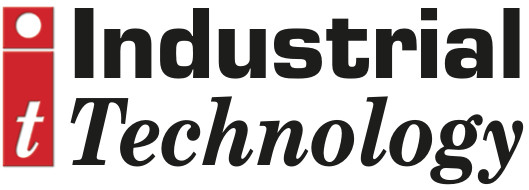
Posted to News on 28th Feb 2024, 15:30
WEG motors revolutionise stainless steel production
Braun Maschinenfabrik supplied a complete abrasive cut-off machine for hot cutting of radially forged bars to a stainless-steel plant in Bolzano, Italy. Braun had to integrate a fully automated material handling system for their abrasive cut-off machine with limited transfer height, needing innovative conveyor system designs to ensure efficient cutting of forged pieces with varying lengths. WEG was asked to supply 68 motors to integrate in the forging line.

(See WEG at FoodManufacturing.Live, 1 May 2024, on stand 38)
Set up in 1848, Braun is a family-owned business which is currently centred on three fields: hydraulic steelwork; steel cutting and grinding machines; and concrete cutting and drilling machines. The company is headquartered in Vcklabruck, Austria and is one of the leading international manufacturers of state-of-the-art high-performance abrasive cut-off machines for cold and hot cutting, and high-pressure grinding machines for steel and non-ferrous metals.
Braun designed a special material handling system at the stainless-steel mill in Bolzano, operated by Acciaierie Valbruna. It used a TS 12 W abrasive cut-off machine and installed Watt Drive geared motors to drive the different units of the system.
The abrasive cut-off machine in Bolzano was integrated by Braun in an existing forging line. Its task was to cut off the ends of the hot forged parts upon completion of the forging process. Previously, finished forged pieces of 2.5 to 5.5 m in length were unloaded by the forge manipulator, transferred onto a roller table running parallel to the system and then ejected as single steel bars.
Longer forged pieces between five and 13 m in length were grasped by a simple device and pushed out using the manipulator. One challenge for the new design of the material handling system was the limited transfer height of 0.5 m for the forge manipulator, because the roller table on the abrasive cut-off machine was substantially higher, at 1.09 m. The aim here was to move the forged pieces from both the unloading positions onto a single roller table line at the same height as the table at the abrasive cut-off machine.
Two paths, one goal
Several new conveyor system designs were required to implement the ambitious handling process. Firstly, the 2.5 to 5 m long forged pieces were automatically moved on by a material transfer device consisting of four transport carriages from the unloading roller table, to the height-adjustable roller table located 3.5 m away or placed in one of five buffer positions.
The larger forged pieces of five to 13 m long were then fully automatically taken out of the forge manipulator by a material transfer unit, applying power and guide rollers and placed continuously on the height-adjustable roller table. The locking movement is provided by hydraulic cylinders with synchronised controls. The conveyor rollers are driven electromechanically.
The latter drive systems consist of two WEG K75 type helical-bevel geared motors with power ratings of 3 kW. The geared motors feature protection class IP55 and provide a reduction ratio of i=51.02 with an output speed of 28 rpm and an output torque of 1,012 Nm.
The height-adjustable roller table, approximately 11.5 m long, removes the shorter forged pieces from the transport carriages using a lifting movement, featuring electromechanical onward movement and lifting using hydraulic cylinders picking the longer forged pieces up directly from the drawing unit.
All the forged pieces are then moved by the height-adjustable roller table from the outlet height of 0.5 to 1.09 m, the level of the roller table at the abrasive cut-off machine. The materials are carried by 17 individually electromechanically driven rollers. There, and on the cut-off machine feed and outlet roller tables as a whole, 59 identical WEG A46 type shaft-mounted geared motors with a power rating of 0.75 kW each are used, two of which have incremental encoders (1,024 HTL).
With an output torque of 106 Nm and a reduction ratio of i=20.86, the geared motors run at a speed of 68 rpm. Due to the large amounts of heat generated during hot cutting, the drives are specially designed to operate in surrounding temperatures of up to +60C and are also fitted with a temperature control (bimetal switch).
The lifting movement of the height-adjustable roller table is also provided very economically via an electromechanical system powered by a WEG F131 type parallel shaft geared motor with a power rating of 15 kW. The drive system features a spring-loaded brake with a braking torque of 100 Nm and through the reduction ratio of i=76.05 selected, it produces an output torque of 7,462 Nm.
On to the cooling bed
Upon completion of the abrasive cutting procedure, the forged pieces are taken out of the machine and moved on for cooling to the chain conveyor or the chain vat. The chain conveyor drive systems, two F111 type parallel shaft geared motors with a power rating of 3 kW each, are designed to operate in surrounding temperatures of up to +60C and are fitted with a temperature control (bimetal switch).
The compact design of the WEG geared motors enables us to deal with many complex tasks in the field of material handling, said Stefan Purrer, head construction and project engineer for steel cutting and grinding machines at Braun. The automation technology for the synchronisation of these three interrelated material handling units, together with the interface with the existing radial forging machine, constituted a particular challenge in this project. We really appreciate WEG expert support, short delivery times and high level of supplier reliability.
Included in the WEGmotion Drives solution is the space-saving modular watt geared motors. These components enable very fine speed adjustments, even at low speeds. This versatile package that integrates motors, drives, gears and digital innovations to enhance the productivity of steel plants delivers the perfect synergy of efficiency, reliability, and performance.






